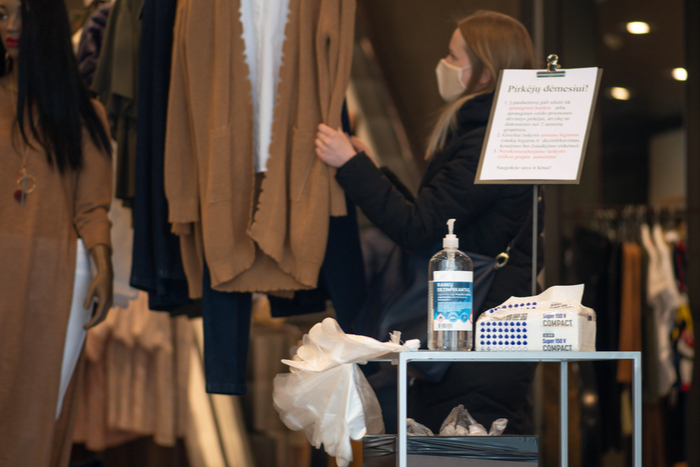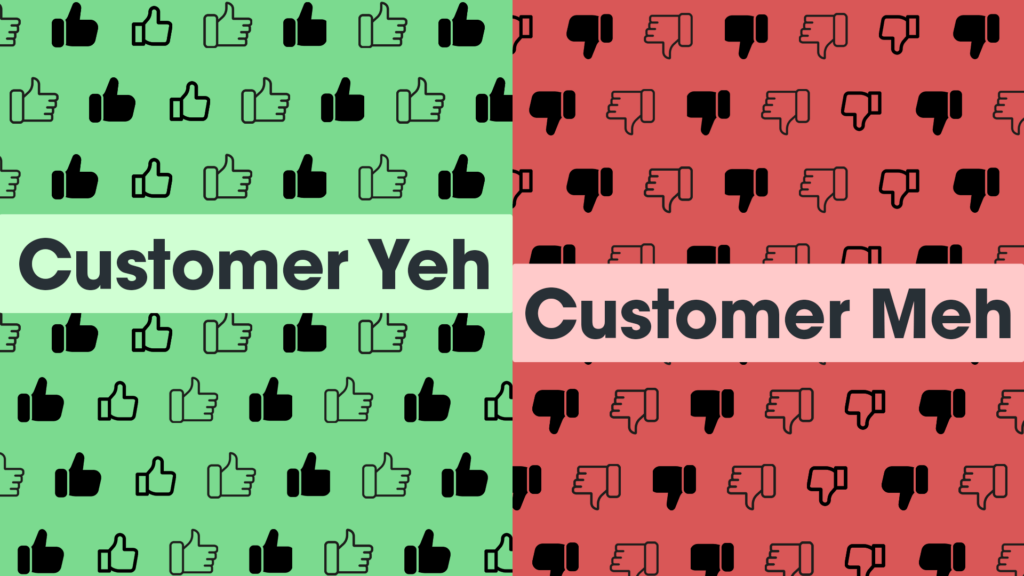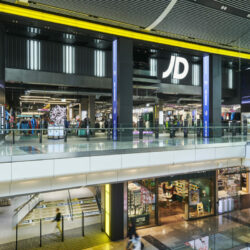Before the Covid-19 pandemic had the UK firmly in its grip in March, many retailers were already struggling due to consumers’ increasing shift to online and/or a growing preference for customer experience over basic transactional shopping.
With non-essential stores being forced to close for almost three months across the UK, online retail has been thriving. Despite the government giving the go-ahead for non-essential shops in England to reopen from June 15, speculation was rife that shopping would not return to the way it was pre-lockdown.
In fact, discount website VoucherCodes revealed that a colossal 76 per cent of 2001 Brits, surveyed between June 8-13, did not plan to visit physical stores due to health and safety fears in the wake of the pandemic. At least 11 per cent of that total said they would not set foot in a retail store under any circumstances, while 46 per cent said they would only head to the shops if they absolutely had to.
The reopened retailers are not only faced with the challenge of having to keep up with new health and safety measures – such as deep cleaning, closed changing rooms, limited in-store customer numbers, perspex screens at tills and the two-metre distancing rule – but they also have to find ways to encourage customers to shop with them regardless of the changes.
“The opening of non-essential retail is a big and positive step in the UK coming out of lockdown, but there is no doubt it will be a long term commitment to get the high street moving properly again,” Rakuten Advertising senior vice president Nick Fletcher said.
“Open doors are by no means a guarantee of returning footfall, and the retail industry will be holding its breath to see how shoppers react to the reopening of stores, and how social distancing is managed.”

Online retail will likely remain an attractive alternative provided the in-store experience is restricted. Fletcher added that “as consumers adapt to returning in store, the combination of bricks-and-mortar and digital channels will be vital,” particularly for fashion retailers.
Before lockdown, consumers used both online and offline shopping, turning to websites, social media and reviews to inform purchases in store – and this is likely to continue post-lockdown. But retailers could capitlise on this by encouraging more customers to share experiences of products through ratings and reviews to drive confidence among shoppers and entice them back into stores.
Wayne Snyder, vice president of retail industry strategy at supply chain platform Blue Yonder, said retailers must act “flexibly” in this “temporary normal”.
“The ‘new normal’ will come further down the road, when Covid-19 is no longer a threat,” he told Retail Gazette.
“They must adapt to this unique scenario, making themselves flexible enough to respond to changes in shopping behaviour, while also keeping staff and customers safe.”
Without a doubt, retailers need to consider how they’ll manage limited physical interaction with shoppers and what the impact would be on items being placed in quarantine for a number of days.
Back in April, the BRC published guidance which included advice on retailers reopening stores amid the pandemic. The trade organisation said it relied on government advice as well as the lessons learned by essential retailers which remained open during the lockdown.

Some of the measures from BRC’s guidance included having separate entrance and exit points if possible, limiting the number of customers in stores at any time, as well as closing changing rooms. The BRC said at the time that retailers would need to be ready and accept that “virus control restrictions will continue to be necessary to limit transmission”.
Snyder added: “A lot could be learned from shops that remained open and adapted their operations during lockdown, whether that’s stripping back the range of products and services on offer, or offering click-and-collect pick-ups outside stores.”
Amisha Chohan, equity research analyst at financial service provider Quilter Cheviot, agreed. She said retailers would have a tough task in encouraging customers to adapt to the so-called new normal.
“The opening of non-essential retail is a positive step in the UK coming out of lockdown”
“They will need a stronger unique selling point to foster and retain brand loyalty,” she said.
Chohan added that retailers would need to improve their agility by having shorter supply chains of four to six weeks for apparel instead of the required six to nine months.
Moreover, customer data – typically acquired through online platforms, will enable retailers to directly market to customers and, through greater analytics, provide a more personalised service, according to Chohan.
Birmingham City University fashion business lecturer Laura Arrowsmith told Retail Gazette that retailers would need to ramp up their customer service to drive people to visit stores. She also said they should use their social media channels and email databases to promote in-store incentives.
In fact, incentives may be an important factor for retailers to consider in a post-pandemic world, as many customers begin to question how long this restrictive way of shopping will go on for.
Graystone Strategy head of retail Peter Scott said retailers have been attempting to make shopping more of an “experience” for customers for years, and despite the Covid-19 restrictions, retailers should continue to offer something new.
“When you look at those doing it most successfully, it comes down to offering something different compared to what a customer can get online,” he explained.
“Events, demonstrations, interaction. This explains why businesses such as Selfridges have thrived. If retailers simply try and go back to the way things were then they will inevitably fail to keep customers engaged.”
“The retail industry will be holding its breath to see how shoppers react to reopenings”
Last week, Selfridges pledged to offer a “joyful experience” upon reopening its stores. The luxury department store, which operates four shops in the UK, said it would offer personal after-hours shopping trips, online beauty appointments and entertainment for those queuing outside. It said a mix of virtual experiences and live entertainment will mean shoppers feel pampered.
While it’s essential that retailers play their part in implementing strict social distancing measures to ensure shopper safety, too much queuing caused by extra security measures could be inconvenient and may lead to poor experience, prompting customers to switch stores or return to online shopping.
However, if a shop can create an enjoyable experience with knowledgeable staff who interact with customers – even during unprecedented times – then traditional retailing will still have a chance to grow its share of the market.
Furthermore, during lockdown consumers forgave retailers’ supply issues, but this honeymoon period may not last much longer. Retailers’ attempts to react to changes in demand and supply during the pandemic were hampered by a reduced workforce, and over-reliance on manual processes. To meet this challenge, many will invest a lot more in their supply chains to drive greater flexibility, visibility and automation.
As things return to normal, but with the pandemic still on people’s minds, consumers will expect goods to be available in store to avoid making wasted trips.
Although the gradual reopening of physical stores will be a welcome change for customers, it is important for retailers to not lose sight of the multichannel experience. Online platforms must continue to be updated to inform and meet customer needs, and to help alleviate pressure on stores.
However, as recovery gets underway, it’s less about the channel and more about the customer. Retailers are now asking themselves, how can you retain the customers you have and encourage them to spend again?
Click here to sign up to Retail Gazette‘s free daily email newsletter


















